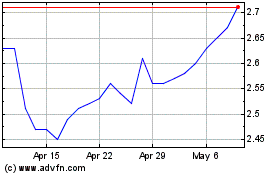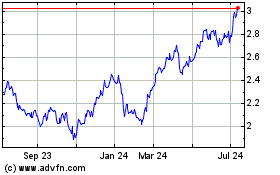SECURITIES AND EXCHANGE COMMISSION
Washington, D.C.20549
FORM 6-K
Report of Foreign Private Issuer
Pursuant to Rule 13a-16 or 15d-16
of the Securities Exchange Act of 1934
28
November 2018
LLOYDS BANKING GROUP
plc
(Translation of registrant's name into
English)
5th Floor
25 Gresham Street
London
EC2V 7HN
United Kingdom
(Address
of principal executive offices)
Indicate
by check mark whether the registrant files or will file annual
reports
under
cover Form 20-F or Form 40-F.
Form
20-F..X.. Form 40-F
Indicate
by check mark whether the registrant by furnishing the
information
contained
in this Form is also thereby furnishing the information to
the
Commission
pursuant to Rule 12g3-2(b) under the Securities Exchange Act of
1934.
Yes
No ..X..
If
"Yes" is marked, indicate below the file number assigned to the
registrant in connection with Rule
12g3-2(b):
82- ________
Index
to Exhibits
Item
No.
1 Regulatory News Service Announcement, dated 28 November
2018
re: Bank
of England 2018 Stress Test Passed
28 November 2018
LLOYDS BANKING GROUP PASSES THE BANK OF ENGLAND 2018 STRESS
TEST
Lloyds Banking Group plc (the Group), together with six other
financial institutions in the UK, has been subject to the 2018
stress test conducted by the Bank of England (BoE).
This year's stress test scenario is broadly the same as in 2017 and
thus remains the most severe test that the Group has faced, and
more severe than the last global financial crisis. The scenario
combines rapidly rising interest rates and unemployment, in
conjunction with significant falls in property prices and GDP. In
particular, base rates rise to 4 per cent in the first year and
remain at this level for a further three years, GDP reduces by 4.7
per cent in the first year, unemployment increases to a peak of 9.5
per cent in the second year, and UK house and commercial property
prices fall 33 per cent and 40 per cent, respectively over the
first three years.
This year's stress test runs under the IFRS 9 accounting standard
(rather than IAS 39) for the first time, which requires the
immediate recognition of expected lifetime losses rather than
reflecting incurred losses. The BoE assesses the stress test
results on an IFRS 9 transitional basis, in line with the phased
implementation approach. Results are also shown on an IFRS 9
fully-loaded basis.
Result of the stress test
The Group has passed the stress test on a transitional basis with
the BoE calculating the Group's transitional CET1 ratio after the
application of management actions as 9.3 per cent and its leverage
ratio as 4.5 per cent against the increased hurdle rates of 8.5 per
cent and 3.8 per cent, respectively.
Despite the severity of the stress test scenario, the Group exceeds
the capital and leverage hurdles after the application of
management actions. At the low point, the total CET1 drawdown on a
transitional basis is 20 basis points less than in the 2017 stress
test and the headroom between the CET1 ratio low point and the
hurdle rate has widened by 40 basis points to 80 basis
points.
Given this performance, the Group is not required to take any
capital actions and all capital guidance is reaffirmed, including
the Board's view of the level of CET1 required, which remains circa
13 per cent, plus a management buffer of around 1 per
cent.
The Group's capital position remains strong having reported a CET1
ratio of 14.6 per cent and a leverage ratio of 5.3 per cent, post
dividend accrual, at 30 September 2018. The Group also continues to
be strongly capital generative, having built 162 basis points of
CET1 in the first nine months of 2018, and continues to expect to
deliver circa 200 basis points for the full year which will support
an increased capital start point for the 2019 stress test (2018
start point: 14.0 per cent on a transitional basis and 13.8 per
cent on a fully loaded basis).
As stated by the BoE, there is no automatic link between the stress
test results and the setting of capital buffers. The PRA buffer is
expected to be communicated to the Group before the publication of
the Group's 2018 results.
Further details
Details of the BoE's approach to the stress test and the detailed
results in relation to all participating financial institutions are
available from the BoE website.
- END -
For further information:
Investor Relations
Douglas
Radcliffe +44
(0) 20 7356 1571
Group Investor Relations Director
douglas.radcliffe@lloydsbanking.com
Corporate Affairs
Matt
Smith
+44 (0) 20 7356
3522
Head of Media Relations
matt.smith@lloydsbanking.com
FORWARD LOOKING STATEMENTS
This document contains certain forward looking statements with
respect to the business, strategy, plans and /or results of the
Group and its current goals and expectations relating to its future
financial condition and performance. Statements that are not
historical facts, including statements about the Group's or its
directors' and/or management's beliefs and expectations, are
forward looking statements. By their nature, forward looking
statements involve risk and uncertainty because they relate to
events and depend upon circumstances that will or may occur in the
future. Factors that could cause actual business, strategy,
plans and/or results (including but not limited to the payment of
dividends) to differ materially from forward looking statements
made by the Group or on its behalf include, but are not limited to:
general economic and business conditions in the UK and
internationally; market related trends and developments;
fluctuations in interest rates, inflation, exchange rates, stock
markets and currencies; the ability to access sufficient sources of
capital, liquidity and funding when required; changes to the
Group's credit ratings; the ability to derive cost savings and
other benefits including, but without limitation as a result of any
acquisitions, disposals and other strategic transactions; changing
customer behaviour including consumer spending, saving and
borrowing habits; changes to borrower or counterparty credit
quality; instability in the global financial markets, including
Eurozone instability, instability as a result of the exit by the UK
from the European Union (EU) and the potential for other countries
to exit the EU or the Eurozone and the impact of any
sovereign credit rating downgrade or other sovereign financial
issues; technological changes and risks to the security of IT and
operational infrastructure, systems, data and information
resulting from increased threat of cyber and other
attacks; natural, pandemic and other disasters, adverse weather and
similar contingencies outside the Group's control; inadequate or
failed internal or external processes or systems; acts of war,
other acts of hostility, terrorist acts and responses to those
acts, geopolitical, pandemic or other such events; changes in laws,
regulations, practices and accounting standards or taxation,
including as a result of the exit by the UK from the EU, or a
further possible referendum on Scottish independence; changes to
regulatory capital or liquidity requirements and similar
contingencies outside the Group's control; the policies, decisions
and actions of governmental or regulatory authorities or courts in
the UK, the EU, the US or elsewhere including the implementation
and interpretation of key legislation and regulation together with
any resulting impact on the future structure of the Group; the
ability to attract and retain senior management and other employees
and meet its diversity objectives; actions or omissions by the
Group's directors, management or employees including industrial
action; changes to the Group's post-retirement defined benefit
scheme obligations; the extent of any future impairment charges or
write-downs caused by, but not limited to, depressed asset
valuations, market disruptions and illiquid markets; the value and
effectiveness of any credit protection purchased by the Group; the
inability to hedge certain risks economically; the adequacy of loss
reserves; the actions of competitors, including non-bank financial
services, lending companies and digital innovators and disruptive
technologies; and exposure to regulatory or competition scrutiny,
legal, regulatory or competition proceedings, investigations or
complaints. Please refer to the latest Annual Report on Form 20-F
filed with the US Securities and Exchange Commission for a
discussion of certain factors and risks together with examples of
forward looking statements. Except as required by any applicable
law or regulation, the forward looking statements contained in this
document are made as of today's date, and the Group expressly
disclaims any obligation or undertaking to release publicly any
updates or revisions to any forward looking statements contained in
this document to reflect any change in the Group's expectations
with regard thereto or any change in events, conditions or
circumstances on which any such statement is based. The
information, statements and opinions contained in this document do
not constitute a public offer under any applicable law or an offer
to sell any securities or financial instruments or any advice or
recommendation with respect to such securities or financial
instruments.
Signatures
Pursuant
to the requirements of the Securities Exchange Act of 1934, the
registrant has duly caused this report to be signed on its behalf
by the undersigned, thereunto duly authorized.
LLOYDS
BANKING GROUP plc
(Registrant)
By: Douglas
Radcliffe
Name: Douglas
Radcliffe
Title: Group
Investor Relations Director
Date:
28 November 2018
Lloyds Banking (NYSE:LYG)
Historical Stock Chart
From Mar 2024 to Apr 2024

Lloyds Banking (NYSE:LYG)
Historical Stock Chart
From Apr 2023 to Apr 2024
